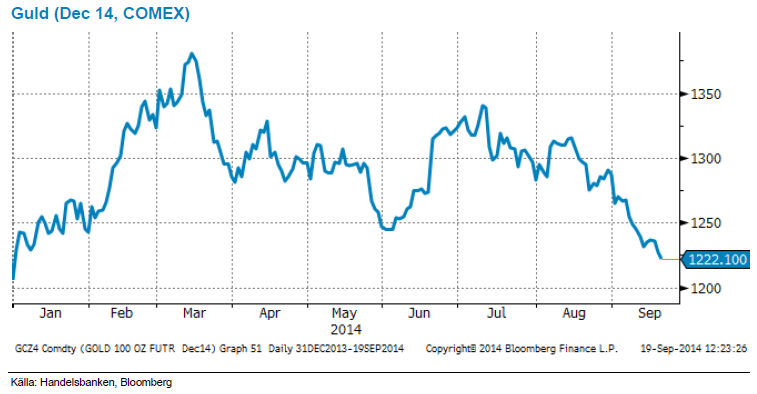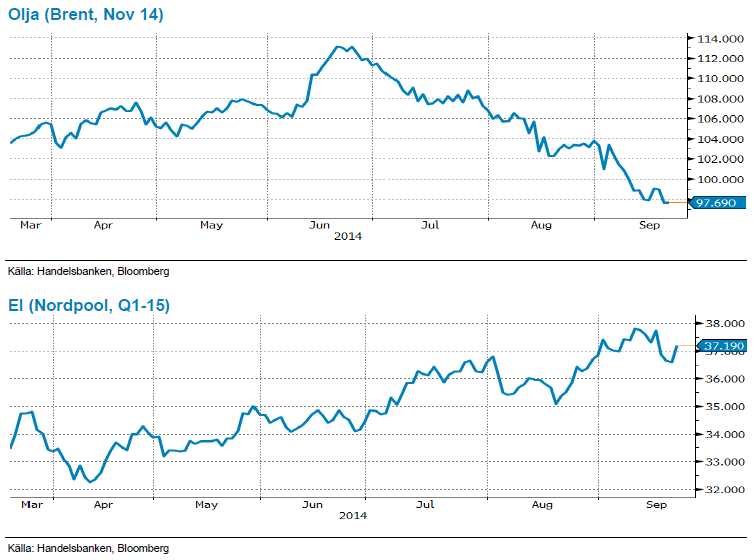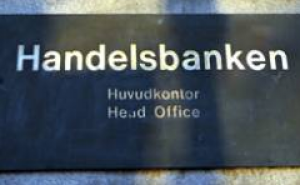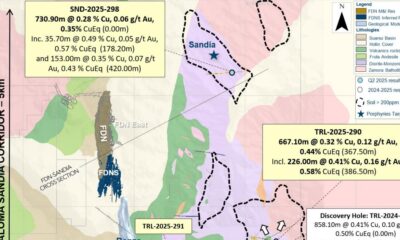Analys
SHB Råvarubrevet 19 september 2014

 Råvaror allmänt: Hektisk vecka
Råvaror allmänt: Hektisk vecka
Veckan inleddes med att marknaden absorberade helgens usla makrodata från Kina. Industriproduktionen och investeringar föll båda handlöst likt i våras efter att ha stabiliserat sig under sommaren. Vårens ministimulanser är uppenbarligen slut och utan dem så svajar kinas ekonomi.
 Redan på måndagskvällen stöttade dock kinesiska ledare upp med en rejäl likviditetsboost till de fem stora bankerna. På detta besked steg sedan råvaror och främst basmetaller ordentligt. Händelsen ska tolkas som att Kina är på väg att missa sitt helårsmål på 7,5 % tillväxt och framöver kan man ana att man ska tolka svag data från Kina som goda nyheter då det ökar sannolikheten för mer stimulanser som främst driver basmetaller uppåt.
Redan på måndagskvällen stöttade dock kinesiska ledare upp med en rejäl likviditetsboost till de fem stora bankerna. På detta besked steg sedan råvaror och främst basmetaller ordentligt. Händelsen ska tolkas som att Kina är på väg att missa sitt helårsmål på 7,5 % tillväxt och framöver kan man ana att man ska tolka svag data från Kina som goda nyheter då det ökar sannolikheten för mer stimulanser som främst driver basmetaller uppåt.
På onsdagen kom sedan Feds efterlängtade besked kring penningpolitiken. Inga stora överraskningar, Fed-chef Yellen fortsatt mjuk i tonen men det faktum att räntebanan skruvats upp och att 2 istället för 1 ledamot reserverade sina röster tolkades som ”hökigt” (det vill säga ökad risk för stigande ränta). Guld handlades ner på beskedet men stabiliserades dagen efter. Övriga råvaror hade det dock tungt i bakvattnet av Fed, främst på grund av att dollarn stärktes.
USA fortsätter leverera bra makrodata, i veckan som husbyggnation. I Kina föll däremot fastighetspriserna i 68 av de uppmätta 70 städerna. Marknaden där är i ordentlig gungning men vi tror att stimulanser kommer hjälpa basmetallerna förbi motståndet i Kina och vänta oss vidare draghjälp från USA-data.
Basmetaller: Svag kinadata kan vara positivt
Basmetallerna har haft en tuff månad där samtliga metaller pressats av ett allt svagare kina. Totalt sett har vårt basmetallindex fallit med 4 % denna månad. Värst drabbad är aluminium och nickel varit som fallit med 5-6 % under september.
Rykten kring exportförbud av oförädlad malm från Filippinerna har tystnat för stunden. Ett eventuellt förbud tar sannolikt 2-5 år att implementera om man jämför med utvecklingen i Indonesien. Kinas lager av nickelmalm tar längre tid att beta av än tidigare prognostiserats, då import har ersatts med Filippinskt, men när lagren börjar sina ser vi nytt stöd för nickelpriset – men det kan dröja några månader. Vi har varit positiva till basmetaller ett tag nu men har överraskats av den svaga utvecklingen i Kina. Nu har situationen vänt och svag kinadata kan vara positivt för metallerna då mer stimulans från ledarna väntas. Vi behåller därför kvar vid vår positiva vy.
Ädelmetaller: Neutrala till guldet
Guld och övriga ädelmetaller fortsätter att uppvisa små rörelser, ”caught between a rock and a hard place” i form av Fed:s kommunikation om framtida åtstramningar, vilken ställs emot geopolitisk oro och ”säker-hamn-köp”. Dollarns förstärkning under 2014 har gjort att svenska guldköpare har sett sina innehav stiga med nära 12 procent i år, och fallet från sommarens toppar begränsas till ca 4 procent.
Vi har neutral vy i denna situation, men fortsätter att påminna om de faktorer som man ska hålla koll på; förväntningarna på när Fed stramar åt sin ultralätta räntepolitik (ju förr dess sämre…) ska ställas mot oro över Putin, ISIS och andra mörka geopolitiska moln. Bägge dessa huvudpoler är sannolikt ömsesidigt beroende, skulle Ukraina-spänningarna – och därtill kopplade ekonomiska sanktioner – lätta så skulle sannolikt tillväxtprognoser i Europa (och globalt) justeras upp efter en tid, och därmed skulle en Fed-åtstramning krypa närmare. Och naturligtvis tvärt om.
Ur ett portföljperspektiv ser vi – baserat på ovanstående resonemang – fortfarande bra skäl till att ha en andel guld i portföljen. Skulle spänningarna tillta så är det inte osannolikt att övriga tillgångar tappar i värde. Guldets roll som en geopolitisk ”försäkring” är intakt, och nuvarande nivåer att gå in skrämmer inte värderingsmässigt.
Energi: Oljan fortsatt under 100 USD/fat
Oljepriset håller sig under 100 USD strecket denna vecka och handlas nu strax under 98 USD/fat. Oljan är svag då produktionstillväxten framför allt i USA överstiger efterfrågan. Så vi har tre intressanta frågeställningar som vi ser det.
Första är om OPEC kommer besluta att sänka produktionen vid mötet i november. Saudi drog ned sin produktion redan i augusti (ned 408kbpd och största sedan 2012) men det lär dröja flera månader innan ytterligare neddragningar och ett ökat intresse från Kina får ner lagersiffrorna mot ”normala” nivåer så sannolikt att brentkurvan (spot/aug15) förblir i stark contango (stigande priser) men sedan planar ut. Den andra frågan är angående Libyens produktion. Libyen har överraskat mot slutet av sommaren men frågan är om det är det hållbart. Vi hade ett starkt rally i veckan efter att Libyen stängde Shahara fältet och alltmer tyder på att uppgången i oljeproproduktion/export är temporär och kommer få ett bakslag vilket lär kunna bli en trigger. Den sista frågeställningen är om Rysslands energiexport kommer fortsätta då Ryssland är lika beroende av Europa som Europa är av Ryssland vad gäller olja och gas. Och i så fall till vilket pris? Kan och vill USA i sin strävan att bli självförsörjande fortsatt bidra till ett pressat oljepris och sätta ytterligare press på Ryssland? Summa summarum… potentialen finns på uppsidan trots allt.
Ser vi till elmarknaden har vädret varit den prisdrivande faktorn även denna vecka. Ett kort uppställ på kalla/torra prognoser men där uppgången kom av sig på förväntad nederbörd över normalen och en viss förbättrad energibalans (ca -7 TWh om vi ser till Markedskrafts prognoser) samtidigt som spotnoteringarna kommer in överraskande lågt. Kolpriserna har backat till nya rekordlåga nivåer och ser ut att kunna backa ytterligare på det goda utbudet på exportmarknaden och eftersom även gasen ser ut att visa svaga tendenser ute på kurvan finns det egentligen inte så mycket som talar för ett stigande elpris just nu. Vi bör dock ha diskonterat vädret till viss del redan så neutral till kort position om något.
Livsmedel: Idealiskt väder har pressat sojan
Priset på soja (sojabönor) har fortsatt ned under veckan med nästan 2 %. Hela växtsäsongen har hittills präglats av nära nog idealiskt väder för den amerikanska sojan och förväntningarna på kommande skörd är fortsatt väldigt hög – hela tiden inkommer rapporter om mycket hög avkastning.
Senaste dagarna har gett varmare väder vilket minskat oro för frost och risken för väderrelaterade bakslag blir allt mindre. Tills ett eventuellt väderproblem dyker upp i Brasilien, där skörden startar efter årsskiftet, är det för tillfället svårt att se varför sojapriser ska vända uppåt. Vi tror snarare att den höga avkastningen kan pressa ned priserna ytterligare något – även om nedsidan nu känns mer begränsad efter så stora fall.
Stigande kakaokonsumtion har gett stöd åt priserna under året men senaste tidens starka dollar har fått både kakao- och kaffepriserna att backa tillbaka. Prognoserna för augusti månads kakaoproduktion justerades upp jämfört från föregående säsong och gynnsamma väderförhållanden väntas i de viktiga kakaoregionerna. Trots lovande prognoser på produktionssidan har kakaopriserna stigit drygt 4 procent under veckan, detta efter oro om Ebolaspridning i Västafrika. Sedan fallet efter starkare dollar har kaffepriserna dansat sidledes efter viss nederbörd. Situationen är långt ifrån stabil, mer regn behövs varför vi tror på svag uppgång den närmaste tiden. Och vad gäller kakao intar vi en neutral vy men följer utvecklingen av spridningen av Ebolaviruset i Afrika.
Handelsbankens råvaruindex (USD)
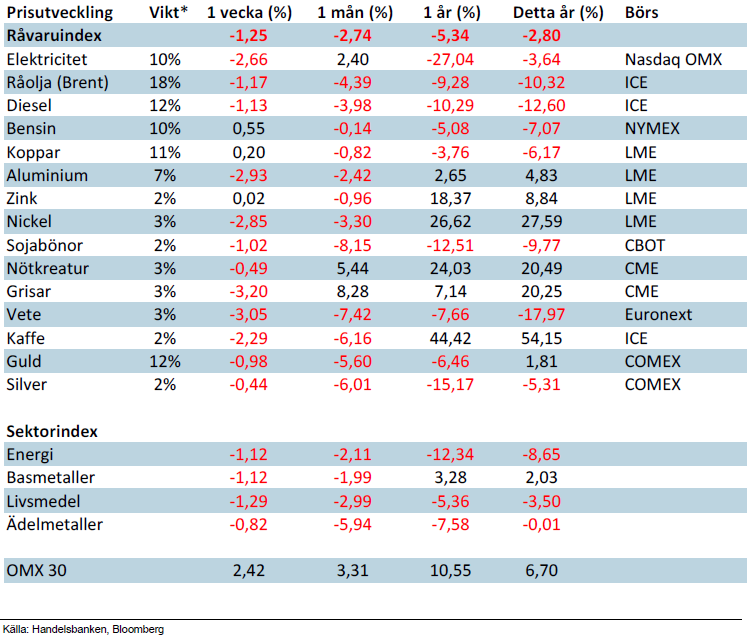
*Uppdaterade vikter från 29 november 2013
Handelsbankens råvaruindex består av de underliggande indexen för respektive råvara. Vikterna är bestämda till hälften från värdet av nordisk produktion (globala produktionen för sektorindex) och till hälften från likviditeten i terminskontrakten.
[box]SHB Råvarubrevet är producerat av Handelsbanken och publiceras i samarbete och med tillstånd på Råvarumarknaden.se[/box]
Ansvarsbegränsning
Detta material är producerat av Svenska Handelsbanken AB (publ) i fortsättningen kallad Handelsbanken. De som arbetar med innehållet är inte analytiker och materialet är inte oberoende investeringsanalys. Innehållet är uteslutande avsett för kunder i Sverige. Syftet är att ge en allmän information till Handelsbankens kunder och utgör inte ett personligt investeringsråd eller en personlig rekommendation. Informationen ska inte ensamt utgöra underlag för investeringsbeslut. Kunder bör inhämta råd från sina rådgivare och basera sina investeringsbeslut utifrån egen erfarenhet.
Informationen i materialet kan ändras och också avvika från de åsikter som uttrycks i oberoende investeringsanalyser från Handelsbanken. Informationen grundar sig på allmänt tillgänglig information och är hämtad från källor som bedöms som tillförlitliga, men riktigheten kan inte garanteras och informationen kan vara ofullständig eller nedkortad. Ingen del av förslaget får reproduceras eller distribueras till någon annan person utan att Handelsbanken dessförinnan lämnat sitt skriftliga medgivande. Handelsbanken ansvarar inte för att materialet används på ett sätt som strider mot förbudet mot vidarebefordran eller offentliggörs i strid med bankens regler.
Analys
OPEC+ in a process of retaking market share

Oil prices are likely to fall for a fourth straight year as OPEC+ unwinds cuts and retakes market share. We expect Brent crude to average USD 55/b in Q4/25 before OPEC+ steps in to stabilise the market into 2026. Surplus, stock building, oil prices are under pressure with OPEC+ calling the shots as to how rough it wants to play it. We see natural gas prices following parity with oil (except for seasonality) until LNG surplus arrives in late 2026/early 2027.

Oil market: Q4/25 and 2026 will be all about how OPEC+ chooses to play it
OPEC+ is in a process of unwinding voluntary cuts by a sub-group of the members and taking back market share. But the process looks set to be different from 2014-16, as the group doesn’t look likely to blindly lift production to take back market share. The group has stated very explicitly that it can just as well cut production as increase it ahead. While the oil price is unlikely to drop as violently and lasting as in 2014-16, it will likely fall further before the group steps in with fresh cuts to stabilise the price. We expect Brent to fall to USD 55/b in Q4/25 before the group steps in with fresh cuts at the end of the year.

Natural gas market: Winter risk ahead, yet LNG balance to loosen from 2026
The global gas market entered 2025 in a fragile state of balance. European reliance on LNG remains high, with Russian pipeline flows limited to Turkey and Russian LNG constrained by sanctions. Planned NCS maintenance in late summer could trim exports by up to 1.3 TWh/day, pressuring EU storage ahead of winter. Meanwhile, NE Asia accounts for more than 50% of global LNG demand, with China alone nearing a 20% share (~80 mt in 2024). US shale gas production has likely peaked after reaching 104.8 bcf/d, even as LNG export capacity expands rapidly, tightening the US balance. Global supply additions are limited until late 2026, when major US, Qatari and Canadian projects are due to start up. Until then, we expect TTF to average EUR 38/MWh through 2025, before easing as the new supply wave likely arrives in late 2026 and then in 2027.
Analys
Manufacturing PMIs ticking higher lends support to both copper and oil

Price action contained withing USD 2/b last week. Likely muted today as well with US closed. The Brent November contract is the new front-month contract as of today. It traded in a range of USD 66.37-68.49/b and closed the week up a mere 0.4% at USD 67.48/b. US oil inventory data didn’t make much of an impact on the Brent price last week as it is totally normal for US crude stocks to decline 2.4 mb/d this time of year as data showed. This morning Brent is up a meager 0.5% to USD 67.8/b. It is US Labor day today with US markets closed. Today’s price action is likely going to be muted due to that.

Improving manufacturing readings. China’s manufacturing PMI for August came in at 49.4 versus 49.3 for July. A marginal improvement. The total PMI index ticked up to 50.5 from 50.2 with non-manufacturing also helping it higher. The HCOB Eurozone manufacturing PMI was a disastrous 45.1 last December, but has since then been on a one-way street upwards to its current 50.5 for August. The S&P US manufacturing index jumped to 53.3 in August which was the highest since 2022 (US ISM manufacturing tomorrow). India manufacturing PMI rose further and to 59.3 for August which is the highest since at least 2022.
Are we in for global manufacturing expansion? Would help to explain copper at 10k and resilient oil. JPMorgan global manufacturing index for August is due tomorrow. It was 49.7 in July and has been below the 50-line since February. Looking at the above it looks like a good chance for moving into positive territory for global manufacturing. A copper price of USD 9935/ton, sniffing at the 10k line could be a reflection of that. An oil price holding up fairly well at close to USD 68/b despite the fact that oil balances for Q4-25 and 2026 looks bloated could be another reflection that global manufacturing may be accelerating.
US manufacturing PMI by S&P rose to 53.3 in August. It was published on 21 August, so not at all newly released. But the US ISM manufacturing PMI is due tomorrow and has the potential to follow suite with a strong manufacturing reading.
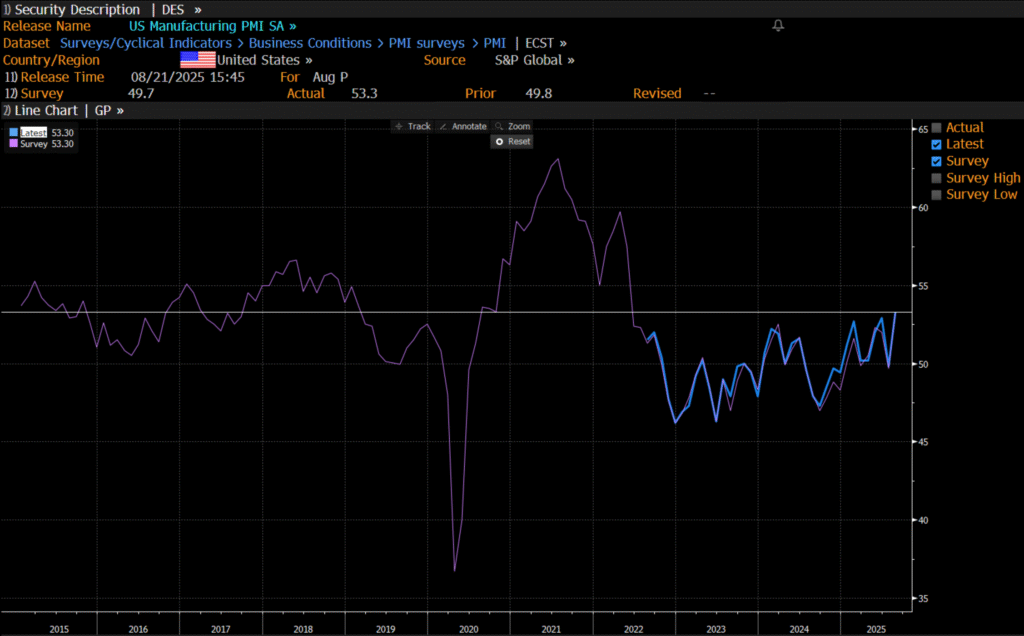
Analys
Crude stocks fall again – diesel tightness persists

U.S. commercial crude inventories posted another draw last week, falling by 2.4 million barrels to 418.3 million barrels, according to the latest DOE report. Inventories are now 6% below the five-year seasonal average, underlining a persistently tight supply picture as we move into the post-peak demand season.

While the draw was smaller than last week’s 6 million barrel decline, the trend remains consistent with seasonal patterns. Current inventories are still well below the 2015–2022 average of around 449 million barrels.
Gasoline inventories dropped by 1.2 million barrels and are now close to the five-year average. The breakdown showed a modest increase in finished gasoline offset by a decline in blending components – hinting at steady end-user demand.
Diesel inventories saw yet another sharp move, falling by 1.8 million barrels. Stocks are now 15% below the five-year average, pointing to sustained tightness in middle distillates. In fact, diesel remains the most undersupplied segment, with current inventory levels at the very low end of the historical range (see page 3 attached).
Total commercial petroleum inventories – including crude and products but excluding the SPR – fell by 4.4 million barrels on the week, bringing total inventories to approximately 1,259 million barrels. Despite rising refinery utilization at 94.6%, the broader inventory complex remains structurally tight.
On the demand side, the DOE’s ‘products supplied’ metric – a proxy for implied consumption – stayed strong. Total product demand averaged 21.2 million barrels per day over the last four weeks, up 2.5% YoY. Diesel and jet fuel were the standouts, up 7.7% and 1.7%, respectively, while gasoline demand softened slightly, down 1.1% YoY. The figures reflect a still-solid late-summer demand environment, particularly in industrial and freight-related sectors.
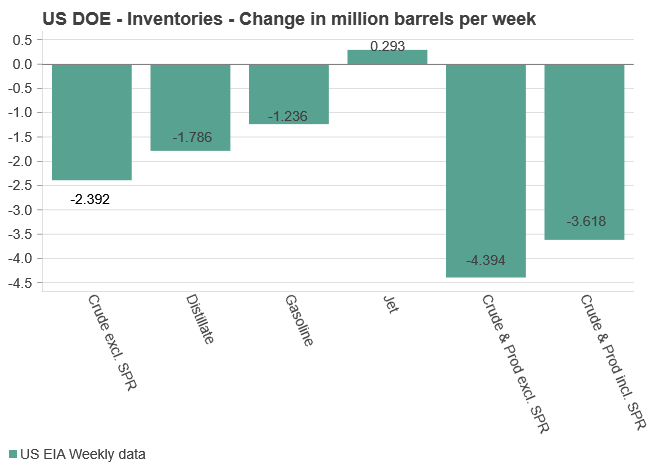

-

 Nyheter4 veckor sedan
Nyheter4 veckor sedanOmgående mångmiljardfiasko för Equinors satsning på Ørsted och vindkraft
-

 Nyheter2 veckor sedan
Nyheter2 veckor sedanMeta bygger ett AI-datacenter på 5 GW och 2,25 GW gaskraftverk
-

 Nyheter4 veckor sedan
Nyheter4 veckor sedanGuld stiger till över 3500 USD på osäkerhet i världen
-

 Analys4 veckor sedan
Analys4 veckor sedanWhat OPEC+ is doing, what it is saying and what we are hearing
-
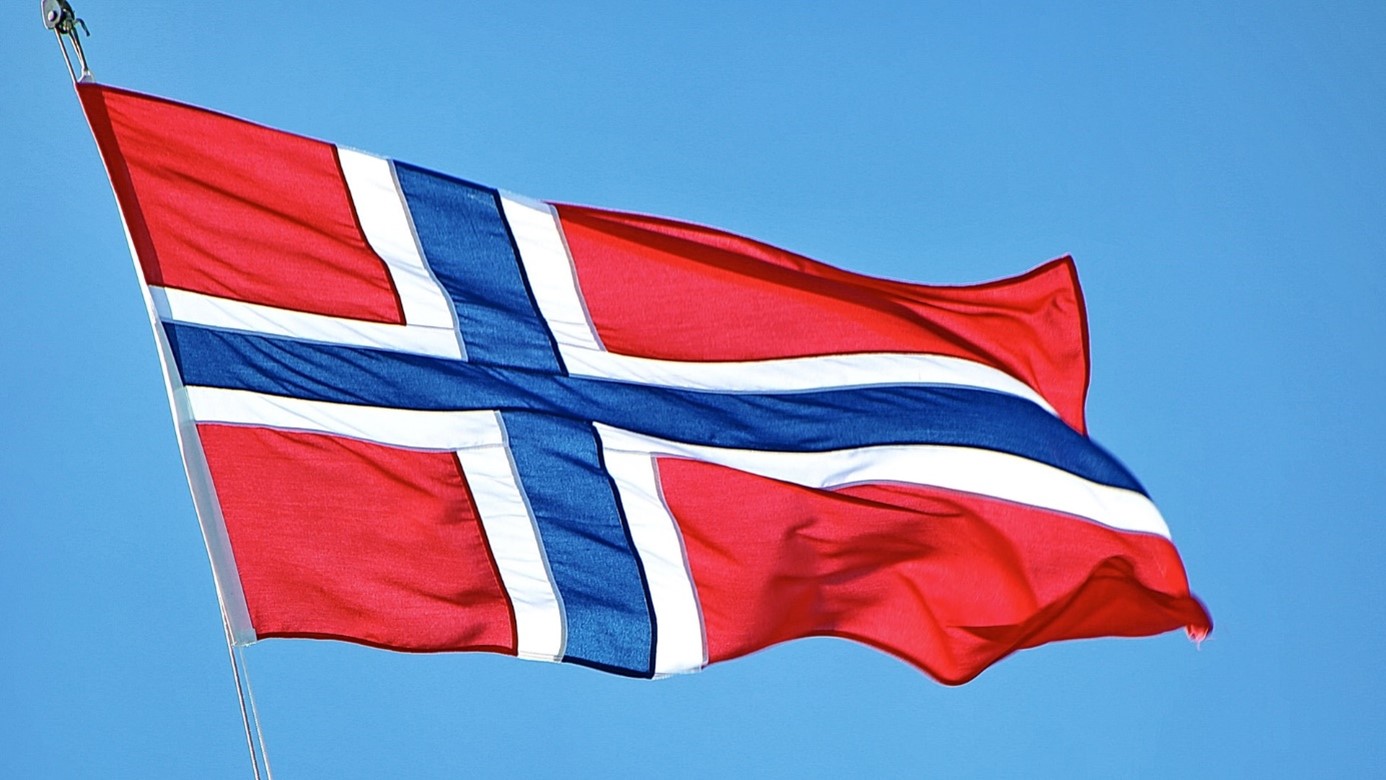
 Nyheter2 veckor sedan
Nyheter2 veckor sedanAker BP gör ett av Norges största oljefynd på ett decennium, stärker resurserna i Yggdrasilområdet
-

 Nyheter4 veckor sedan
Nyheter4 veckor sedanLyten, tillverkare av litium-svavelbatterier, tar över Northvolts tillgångar i Sverige och Tyskland
-

 Analys3 veckor sedan
Analys3 veckor sedanBrent sideways on sanctions and peace talks
-

 Nyheter3 veckor sedan
Nyheter3 veckor sedanEtt samtal om koppar, kaffe och spannmål




